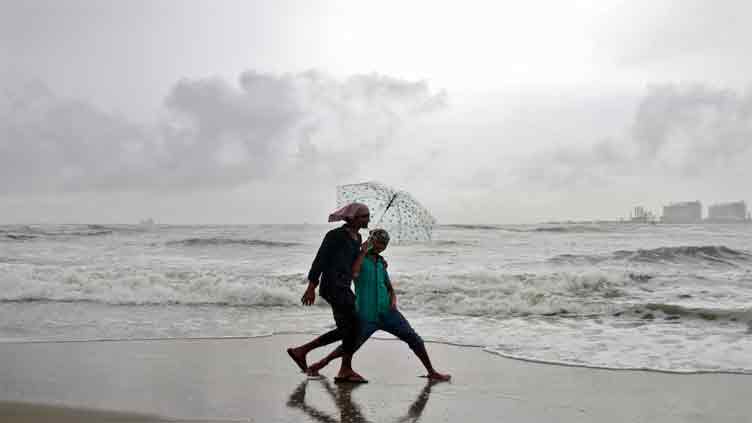Welcoming news for Pakistan: Critical monsoon hits India mainland early

Business
Below-average rains in 2023 depleted reservoirs, hit food production in Asia's third-largest economy
MUMBAI/NEW DELHI (Reuters/Web Desk) – Monsoon rains hit India's southernmost Kerala coast a few days earlier than expected on Thursday, the national weather office said, boosting prospects for bumper harvests that could spur farm and economic growth in Asia's third-largest economy, Reuters reported.
Read more: India monsoon rains expected to be above average in a boost for agriculture
The early arrival of monsoon is certainly a great news for Pakistan where people are experiencing record-breaking heatwave for the last two weeks.
Further advance of monsoon in the coming days and weeks would be closely watched as it is going to determine the amount of rains during the season for Pakistan.
However, the Pakistan Metrological Department has already predicted higher than average monsoon this year in the country.
Reuters says summer rains usually begin to lash coastal Kerala state around June 1 and spread across the whole country by mid-July, triggering the planting of crops such as rice, corn, cotton, soybeans and sugarcane.
The monsoon, the lifeblood of the country's nearly $3.5 trillion economy, delivers nearly 70 per cent of the rain that India needs to water farms and recharge reservoirs and aquifers.
Nearly half of India's farmland, without irrigation, depends on the annual June-September rains.
Regular rains during the monsoon season will also bring relief from the searing heatwave that has seen maximum temperatures cross 50 degrees Celsius (122°F) in some parts of the north and west of the country.
Read more: Indian capital swelters as temperature hits all-time high of 52.9 Celsius
India is likely to receive an average amount of rain in June, although maximum temperatures in the month are likely to remain above normal, according to the state-run India Meteorological Department (IMD).
This year's monsoon rains are expected to be 106pc of the long-term average.
Read more: Pakistan heatwave pushes temperatures to 52 C, westerly to hit upper areas
The IMD defines average or normal rainfall as between 96pc and 104pc of a 50-year average of 87 cm (35 inches) for the four-month season.
Below-average rains in 2023 depleted reservoir levels and hit food production. The government responded by imposing curbs on exports of rice, wheat, sugar and onions.
Resuming exports depends on how quickly production recovers in 2024, which is not possible without good monsoon rainfall. India is the world's second-biggest producer of rice, wheat and sugar.
Plentiful rains could also help to bring down food inflation, which has remained above the central bank's comfort level.
The La Nina weather phenomenon, which increases rainfall in India, is expected to set in during July and September.



